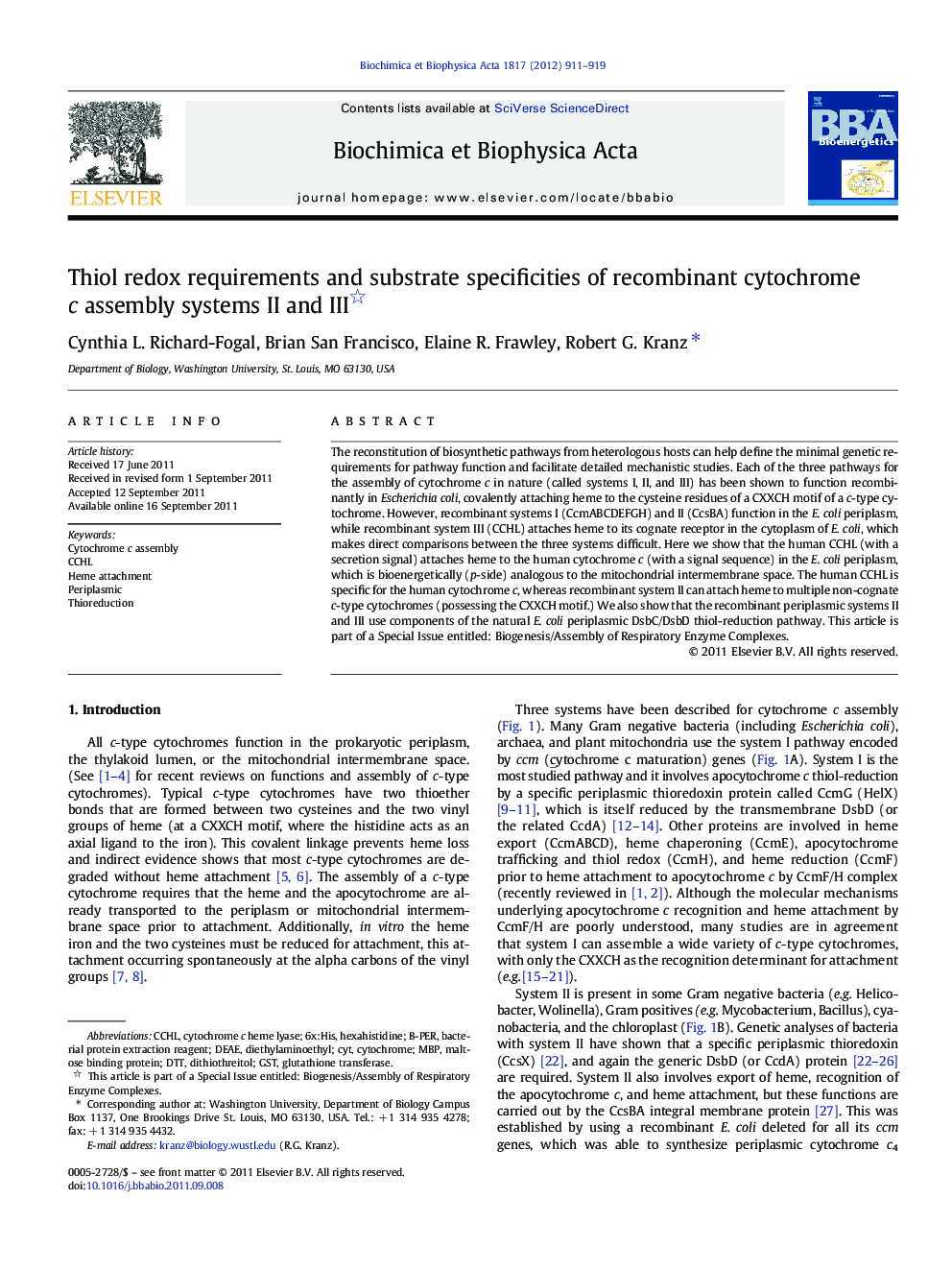| Article ID | Journal | Published Year | Pages | File Type |
|---|---|---|---|---|
| 1942440 | Biochimica et Biophysica Acta (BBA) - Bioenergetics | 2012 | 9 Pages |
The reconstitution of biosynthetic pathways from heterologous hosts can help define the minimal genetic requirements for pathway function and facilitate detailed mechanistic studies. Each of the three pathways for the assembly of cytochrome c in nature (called systems I, II, and III) has been shown to function recombinantly in Escherichia coli, covalently attaching heme to the cysteine residues of a CXXCH motif of a c-type cytochrome. However, recombinant systems I (CcmABCDEFGH) and II (CcsBA) function in the E. coli periplasm, while recombinant system III (CCHL) attaches heme to its cognate receptor in the cytoplasm of E. coli, which makes direct comparisons between the three systems difficult. Here we show that the human CCHL (with a secretion signal) attaches heme to the human cytochrome c (with a signal sequence) in the E. coli periplasm, which is bioenergetically (p-side) analogous to the mitochondrial intermembrane space. The human CCHL is specific for the human cytochrome c, whereas recombinant system II can attach heme to multiple non-cognate c-type cytochromes (possessing the CXXCH motif.) We also show that the recombinant periplasmic systems II and III use components of the natural E. coli periplasmic DsbC/DsbD thiol-reduction pathway. This article is part of a Special Issue entitled: Biogenesis/Assembly of Respiratory Enzyme Complexes.
► Human CCHL matures human cytochrome c in the E. coli periplasm but at significantly lower levels than cytoplasmic CCHL ► E. coli DsbC and DsbD mediate thiol reduction for recombinant systems II and III ► The major feature of apocytochromes recognized by CcsBA is CXXCH ► Residues in addition to CXXCH are important for apocytochrome recognition by CCHL
